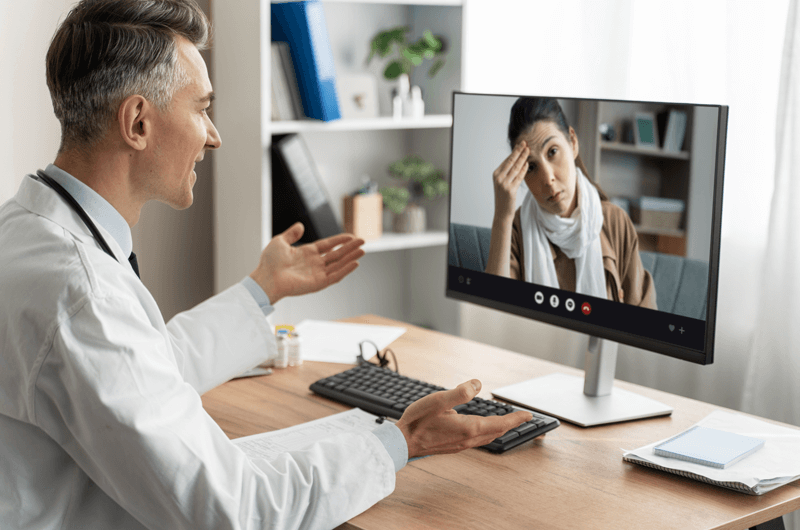Google appears to be testing a service that connects patients with doctors over a video chat, opening new possibilities for virtual office visits or e-visits. According to the Verge report, this feature is being tested across a limited number of users, who can see a blue icon on their search results when searching for basic health information (for example, knee pain). On clicking this icon, they can talk to the doctor over a video chat. From this, we can expect that virtual office visits may become more accessible for patients. If this feature becomes successful, there is bound to be a substantial increase in the process of billing for e-visits.
The Verge report says this service ties into Helpouts, a marketplace experts can use to give lessons and advice over video chat and charge for their services. The video chat service can really boost e-visits once its testing proves successful. Though e-visits are typically used to address non-urgent ongoing or new symptoms, we can expect an evolving role of its use in the management of chronic health conditions including diabetes.
Importance of E-Visits
E-visits are really important in the current healthcare scenario, especially with the aging baby-boomer population and rising medical costs. Here are the key reasons for that.
- With the rising number of older people and newly insured patients under the Affordable Care Act (ACA), physicians’ offices find it quite difficult to schedule appointments for all patients quickly, which increases their wait time. On the other hand, electronic visits comprised of videoconferencing between physicians and patients can free up physicians from the strain associated with office visits.
- Electronic visits are convenient and less costly alternatives to traditional office visits. With videoconferencing, patients can easily get access to a primary care physician instead of going for a costly emergency room visit when they get sick.
- Online visits enhance the communication between patients and doctors with an opportunity for patients to discuss their symptoms (for example, wounds, skin problems) and concerns conveniently from their own homes while the physician can make a diagnosis, provide treatment instructions and develop a specific treatment protocol.
A study from Deloitte says that around 75 million of 600 million appointments with general practitioners will encompass electronic visits (e-Visits) in 2014. As the situation remains favorable for increased electronic visits in the future, Google’s video chat service will make e-visits more popular as the search engine is widely used among people.
Billing for E-Visits
With the emerging role of e-visits in the current healthcare scenario, it is very important for physicians to understand billing for e-visits. The key points that need to be considered are:
- Insurers providing reimbursement for e-visits typically pay only for visits that require medical decision making and results in a documentable action including a change in medication, ordering of a diagnostic test or a referral to a specialist.
- E-visits should not be billed more than once within 7 days for the same occurrence of care or be associated with an evaluation and management (E/M) service performed within 7 days. Electronic visits billed within the post-operative period of a previously completed major or minor surgical procedure will be considered part of the global payment for the procedure and should not be reported separately.
- E-visits are provided by a qualified physician, physician’s assistant or nurse practitioner and there must be an existing provider/patient relationship based on a previous office visit.
- Requests for medication refills, reporting of test results, and distribution of patient education materials are not billable for electronic visits.
The codes used for reporting e-visits are as follows.
- 99444: Online medical evaluation – physician non-face-to-face E&M service to patient/guardian or health care provider not originating from a related E&M service provided within the previous 7 days.
- 98969: Online assessment and management services provided by a qualified non-physician health care professional to an established patient, guardian, or health care provider not originating from a related assessment and management service provided within the previous 7 days, using the internet or similar electronic communications network.
Do not report 99444 when using 99339-99340, 99374-99380 for the same communication or for anticoagulation management while reporting 99363, 99364.

